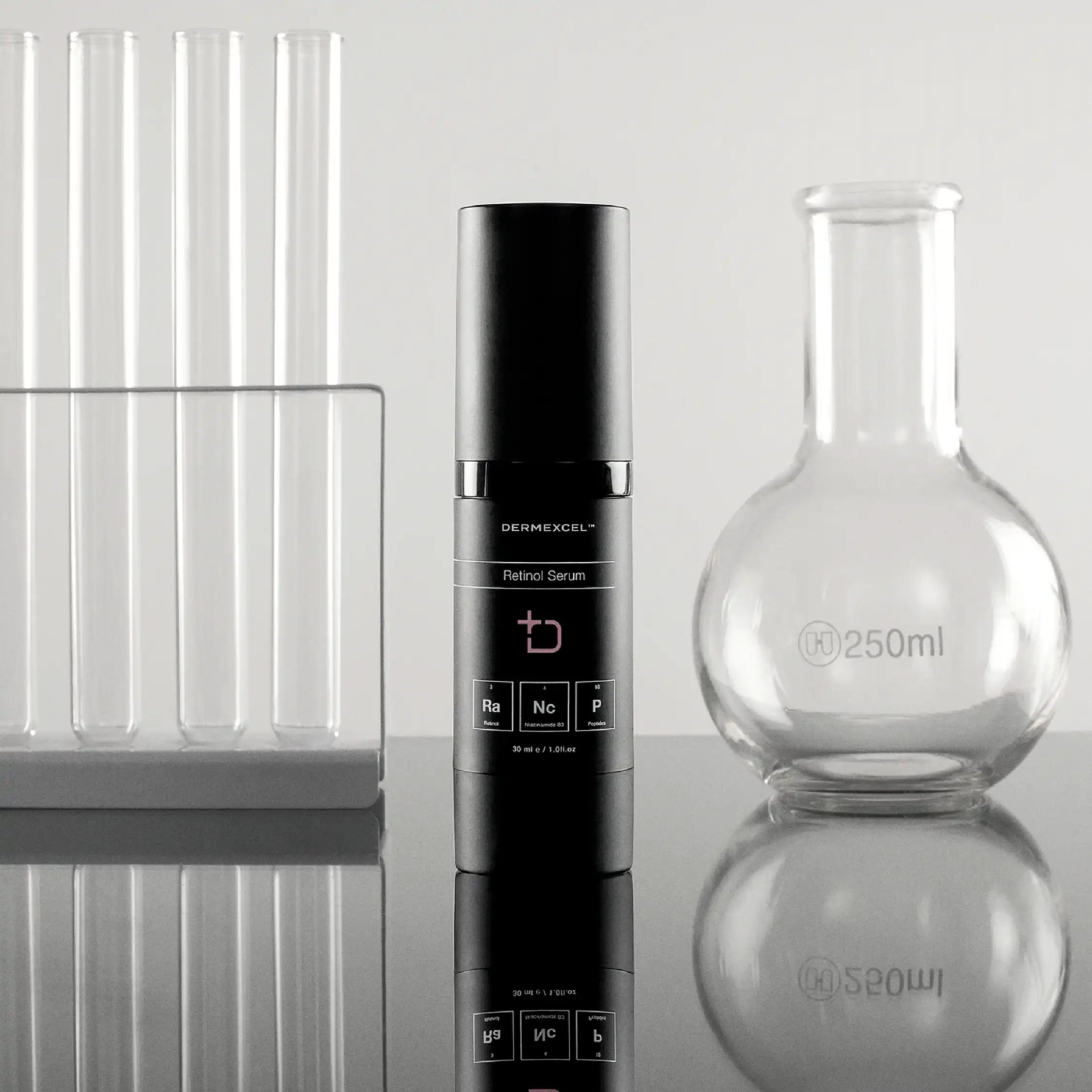





Pay interest-free installments from R 335.00 with various payment gateways selected at checkout.
SIZE: 30 mL




Choose options


Aqua, Niacinamide, Acetyl Hexapeptide-8 & Caprylyl Glycol, Dimethyl Isosorbide & Hydroxypinacolone Retinoate, Glycerin, Hydroxypropyl Cyclodextrin & Palmitoyl Tripeptide-38, Sodium Acrylates Copolymer & Lecithin, Phenoxyethanol & Ethylhexylglycerin, Acrylates copolymer, Glycerin, C14-22 Alkane, Pentaerythrityl Tetra-Di-t-Butyl Hydroxyhydrocinnamate
Retinol Serum
product benefits
Boost Collagen Production
Pigmentation treatment
Improve Skin Cell DNA
Decrease Lines & Wrinkles
Refine Skin Texture & Pores
Enhance skin renewal
Promote Skin Hydration
Anti-inflammatory
Skin barrier enhancement
Sebum Regulation
Indications for Retinol Serum
Volume loss
DNA Protection
Rough Skin Texture
Acne / Breakouts
Clogged Pores
Rosacea / Red Skin
Inflammation
Sensitive Skin
Enlarged Pores
Retinol
Mode of action
DermExcel Retinol Serum contains 3% GranActive Retinoid - Hydroxypinacolone Retinoate (HPR).
retinoid molecule comparison
| stability | very high |
| irritation | low |
| efficacy | high |
| key notes |
| stability | moderate |
| irritation | moderate |
| efficacy | moderate |
| key notes |
| stability | low |
| irritation | high |
| efficacy | high |
| key notes |
| stability | low |
| irritation | very high |
| efficacy | very high |
| key notes |
| Hydroxypinacolone Retinoate (HPR) | Traditional Retinol | Retinaldehyde | Retinoic acid | |
|---|---|---|---|---|
| stability | very high | moderate | low | low |
| irritation | low | moderate | high | very high |
| efficacy | high | moderate | high | very high |
| key notes |
Testimonials


Not sure which products you need?
Find your regimen
Assessment
Submit your free Dermal Diagnosis™ Assessment
Treatment Plan
Receive your Free Personal Profile and Treatment Plan
Confident Skin
Start your Simple and Effective journey to Confident Skin!























